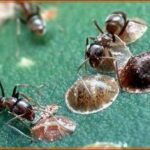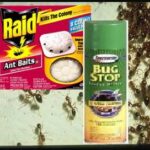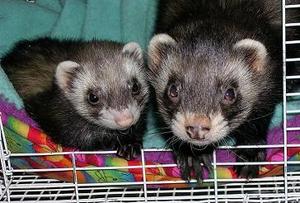Are you searching for random facts about ants? Are you writing a science report about ants? Are you a teacher or home school parent creating a lesson plan about ants? Did your child just discover an ant bed and you’d like to make a lesson out if? Here are a few fun facts about ants for kids.
Ants live almost everywhere in the world.
You can find ants in Germany, South Africa, Brazil, Canada and just about every part of the world. The only exception is the very cold climates in the Artic and Antartic. Also, some high mountains do not have ants. But, for the most part, you can find ants almost everywhere.
There are about 10,000 different types of ants.
Ants are part of the Formicidae family. There are approximately 10,000 different species of ants within the family. There are probably still some ants out there that scientists haven’t discovered yet.
Ants come in a variety of sizes.
Some ants can be almost 3 inches long, others are so small you need a magnifying glass to see them. Watch this Youtube video here of one of the biggest ants in the world.
Most ants have decent vision.
Unlike some bugs, many ants can see fairly well. They have two compound eyes. Each of the compound eyes have between to 6 to 1,000 very small eyes. They help the ant to see nearby objects, their surroundings and much more.
However, there are some ants that are completely blind. They navigate using their senses of touch and smell.
Ants experience a life cycle of four stages.
Like many bugs, ants go through four stages of life. This is known as metamorphosis. The stages are egg, larva, pupa and adult. You can learn more about the life cycle of the ant in this video here.
Ants eat many types of food.
Ants consume many kinds of food. They eat worms, beetles, bees, termites, caterpillars and other insects. They also drink the juices from many plants. Some types of ants will eat fruit, seeds, honey, leaves and even fungus. As you probably know, ants will also consume many types of human food.
Ants are very strong.
Ants are able to carry items that are much heavier than they are. They are very strong. They have inner and outer jaws. Their outer jaws are called mandibles. They pick up things from their mandibles. They also use them for biting, digging and cutting.
Ants live in groups called colonies.
Ants live and work in colonies. The ants work together as a team to find food, care for the babies, build nests, and protect each other. Each colony has at least one queen ant. Queens are the biggest and mate and lay eggs. Worker ants will carry food to the Queen ant. Some special worker ants, called nurse ants, will help her take care of the young and the nest.
The largest recorded ant colony was 3600 miles long.
In 2002, scientists discovered an ant colony 3600 miles long. It consisted of billions of ants and lasted from Italy to Spain. You can read more about it here.
Ants have many enemies.
Ants are near the bottom of the food chain and have many predators. Some animals that eat ants are lizards, birds, frogs, spiders and of course, anteaters. Of course, many ants are killed by pesticides of humans. Some people in South America near the Amazon rainforest eat a type of ants that taste sweet.
Most ants live between two and six months.
Most ants live for roughly 90 days. However, it depends on the species. One British researcher had a female black ant that lived for fifteen years!
Ants help plants.
Ants loosen the soil with their travels. This will help plants grow better. Although they can be pests, they can be helpful in some gardens.
These are just a few fun facts about ants for kids. If your child is fascinated with bugs, one great idea is to get an ant farm. Read “Antworks Space Age Ant Habitat Review” for more insight.
Want to read more random facts? Take a look at “Facts for Kids About Ladybugs” and “Facts for Kids About Mosquitoes.” You also might check out “Fun Facts for Kids About Grasshoppers.” Happy Learning!
SOURCES:
www.youtube.com/watch?v=2MFSp9SyCq0
Wild Wild World: Ants by Liza Jacobs
Ants by Cynthia Overbeck
Insect Facts and Folklore by L. Patricia Kite
thelongestlistofthelongeststuffatthelongestdomainnameatlonglast.com/largest77.html





